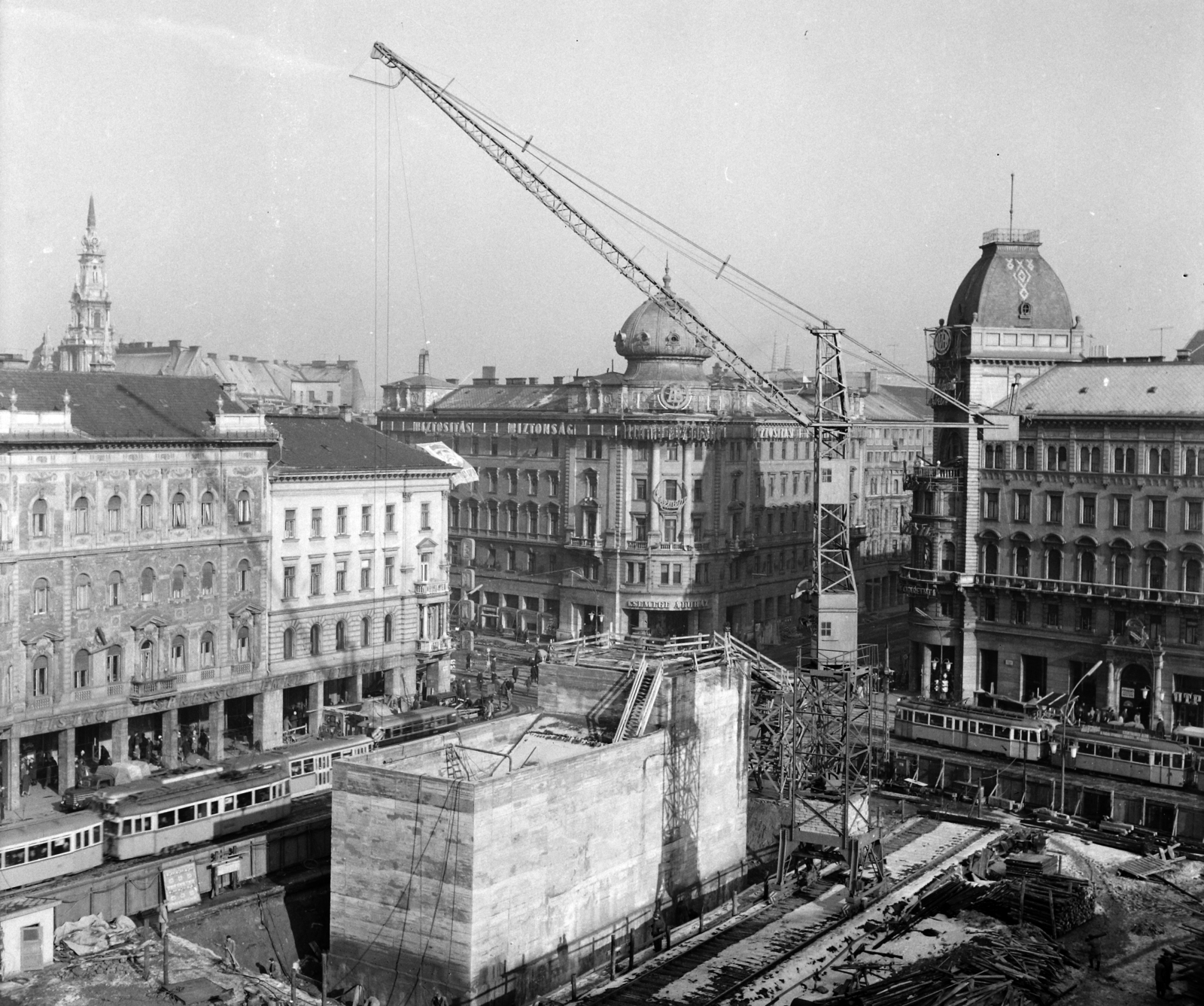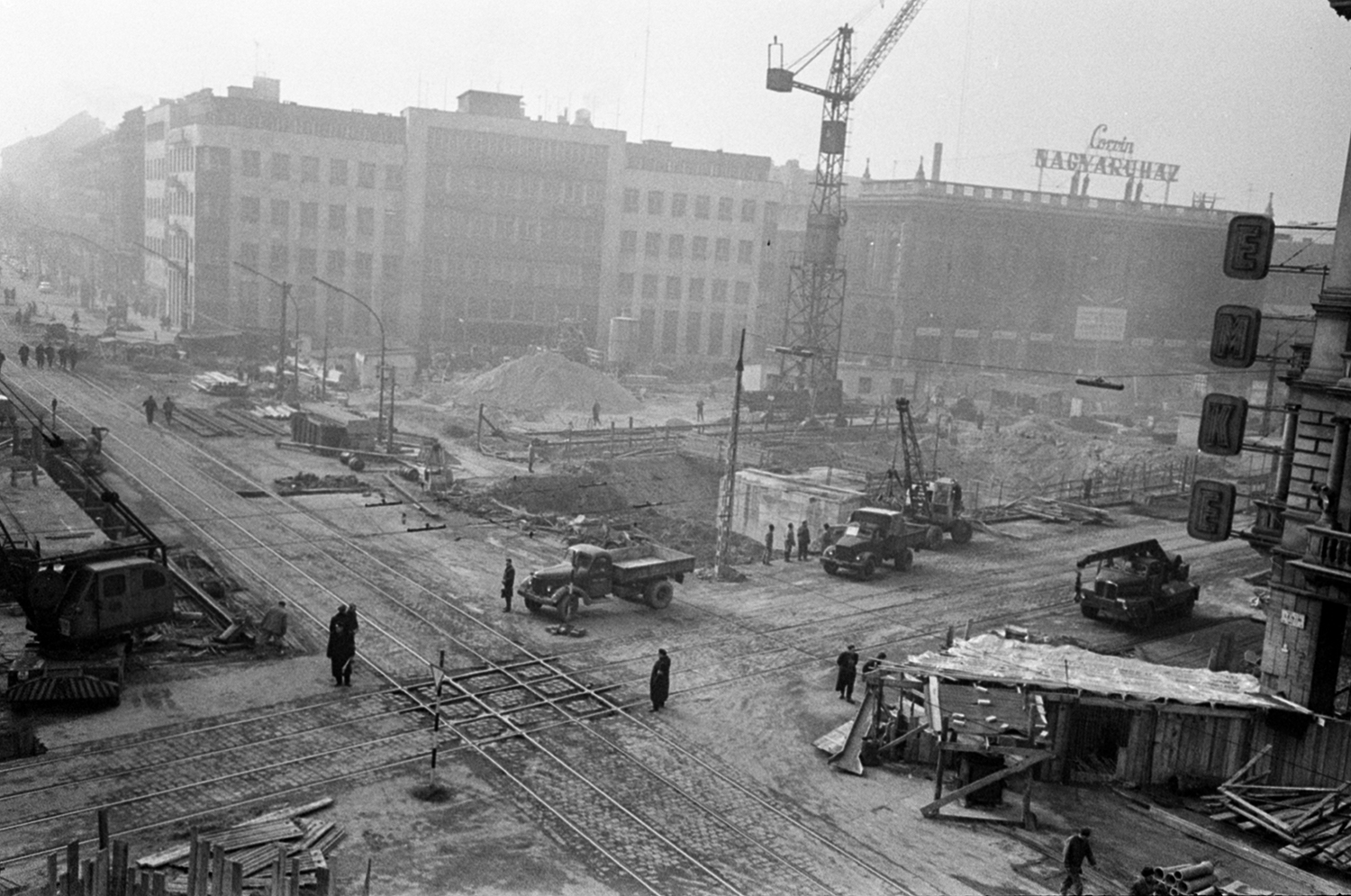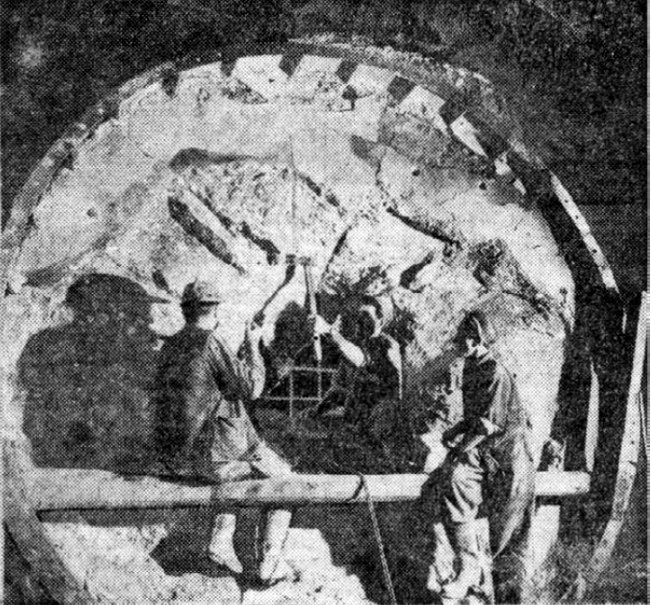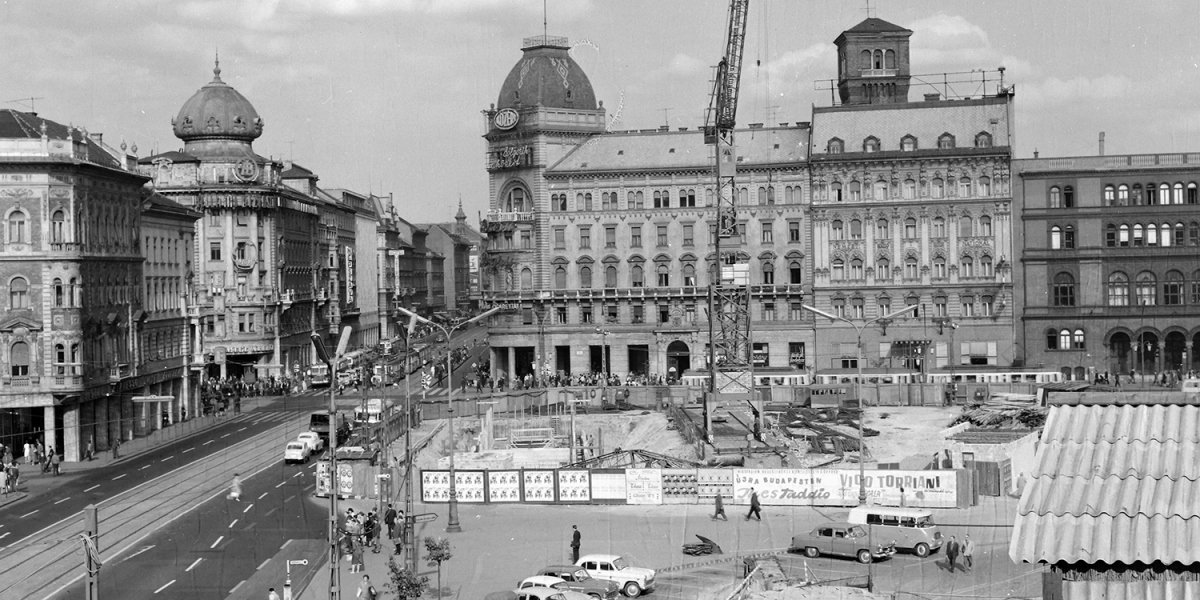Sixty years ago, the construction of the M2 metro line garnered a great deal of interest. Although the destruction of the National Theatre that once stood on Blaha Lujza Square is still a painful memory for many residents, the demolition did not diminish interest in the project. Pedestrian underpasses were built around the city due to the metro, giving the city centre a new, cosmopolitan feel. Work continued underground, in not so everyday conditions.
The construction of the tunnels brought many interesting finds to lights, including the remains of long-dead animals. On 4 February 1966, Magyar Nemzet reported the following:
“Countless snails and mussels have been found, especially in the area east of Hungária Boulevard. In addition to the remains of fish, the bones of vertebrates have been found around Vérmező. At the corner of Hungária Boulevard and Dózsa György Road, geologist Barabás found the bones of an ancestor of our current rodents, a rare find in European palaeontology. The bones of an ancient rhino-like mammal were unearthed in the same area. The remains of several crabs, antelopes, rhinoceroses, dolphins, and even shark teeth, have been excavated. A 15-centimetre long mammoth tooth was found near the Népstadion.
Work was not confined to below ground level. On the surface, the Blaha Lujza Square underpass was being built. The work was hampered by the sandy, silty soil in the area (a few hundred years ago, a branch of the Danube flowed along the path of the road) and by the need to relocate an 800-millimetre main water-pipe running through the underpasses planned location.

Part of the station under construction on Blaha Lujza Square in 1965 The concrete box was lowered into the ground (Photo: Fortepan/No.: 27048)
Significant progress was also reported on the tunnels in the same days: the tunnels between Blaha Lujza Square and Keleti Railway Station finally met. However, the process of connecting the two branches was not as simple as one might think. One of the tunnels was filled with normal air pressure, while in the other, air pressure was higher.
The tunnel between Blaha Lujza Square and Keleti Railway Station runs in a layer of 15–30-million-year-old clay that is less watertight and not so stable. Therefore, the tunnel's construction was an arduous task, especially due to the liquefied sand and silt in the layer of clay. As a result, a high-pressure atmosphere was created in the tunnel to displace water from its surroundings and make construction easier.
Caisson construction was not a new method in Hungary, as it was first used during the construction of the foundations of the Szeged railway bridge in the 1850s.

Construction on Blaha Lujza Square in 1966. The original, uncovered facade of the Corvin store can still be seen in the background (Photo: Fortepan/No.: 96797)
However, working in this environment was no easy task, as high-pressure causes a lot of physical strain. Until safer methods were developed, many workers died in the 19th century due to decompression sickness after leaving the high-pressure work area too quickly.
Thus the tunnel from Blaha Lujza Square was built in such a high-pressure environment. In the work area, air pressure was 2–2.5-times usual, which placed massive strains on the human body. Other methods were explored, such as soil freezing and soil stabilization, but were unsuccessful. After such a test, the building of Rókus Hospital almost collapsed when the silty soil under the hospital collapsed into the tunnel.

Breaking through the concrete wall separating the two tunnel sections in the 4 May 1966 issue of Népszabadság
In the other section of the tunnel, towards Fehér Road, work faced no such problem, and no high-pressure area was created. However, the two sections could not be connected accidentally. To ensure this could not happen, a one and a half meter thick reinforced concrete wall was erected between the two tunnel sections before construction began. The 7 February 1966 issue of Hétfői Hírek wrote about the works:
“As the director of Földalatti Vasút, Károly Hídvégi told HH, workers digging towards the Keleti Railway Station had reached the already completed section with both tunnels, 35 metres under the intersection of Rákóczi Road and Osváth Street. At present, they are only separated by a concrete wall. The wall will be removed later, and afterwards, underground travel along a 4.5 km section will be possible, between Fehér Road and Deák Square, without interruption.
The huge one and a half meter concrete wall separating the two tunnel sections could only be demolished after the tunnels towards Blaha Lujza Square had been completed and the pressurized air released from the passages. The wall was demolished with explosives in May 1966, and the tunnels were completed.
Nevertheless, public transport only began four years later.
Cover photo: Construction on Blaha Lujza Square in 1965, after the demolition of the National Theater (Photo: Fortepan/No.: 96797)





































Hozzászólások
Log in or register to comment!
Login Registration